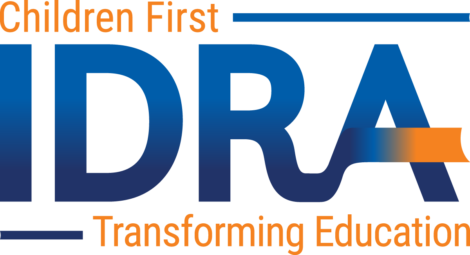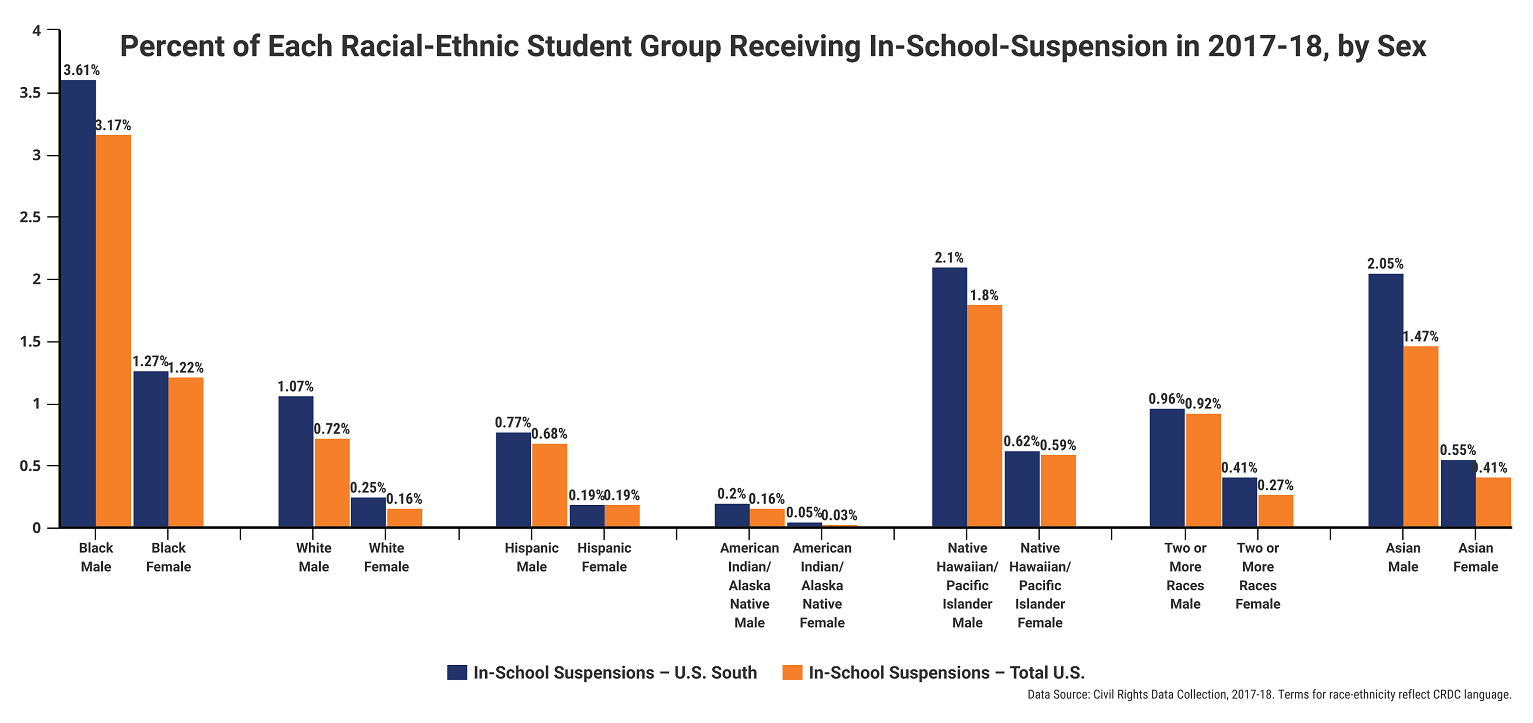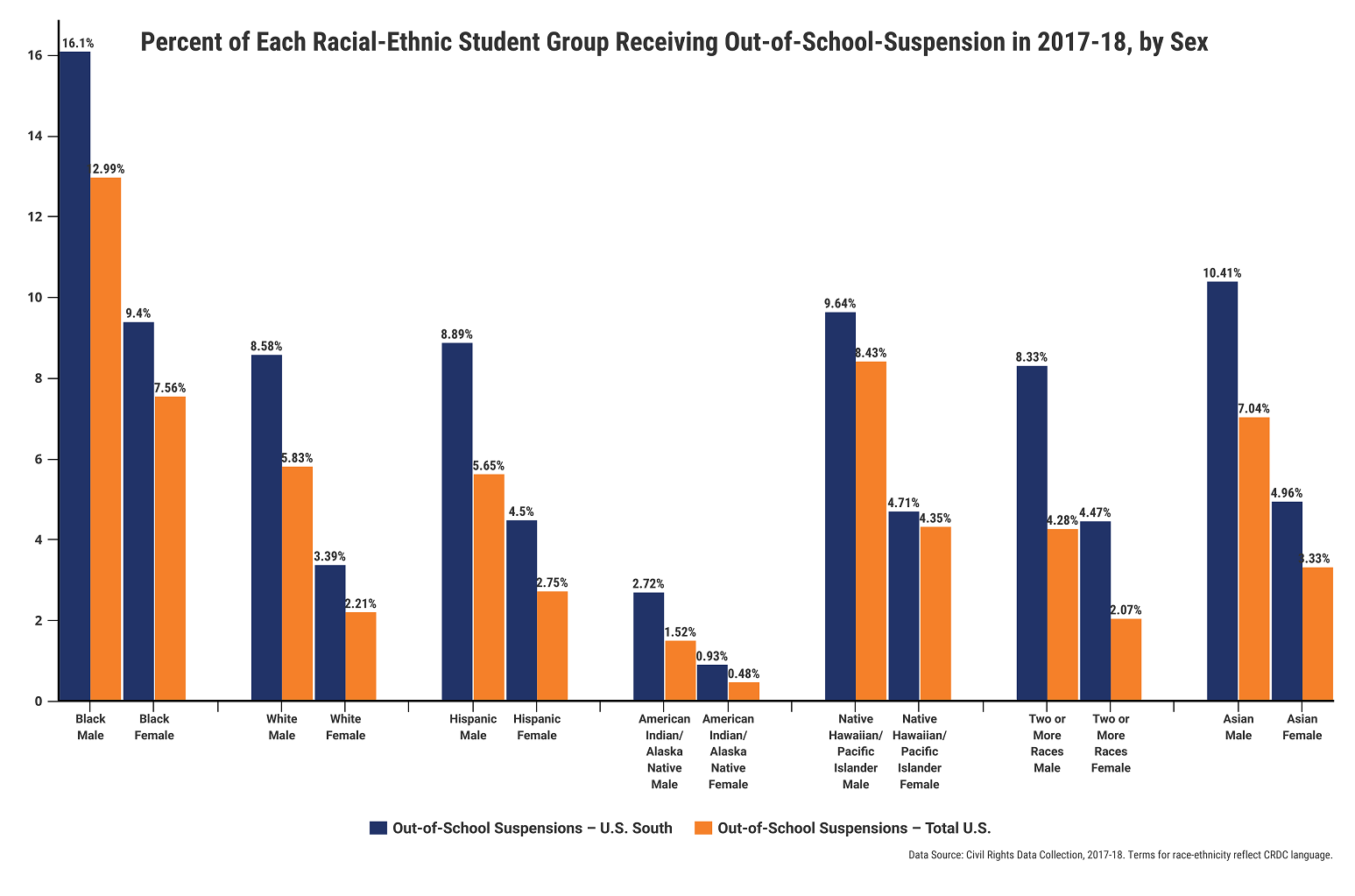• February 1, 2021 • Policy Brief by IDRA and Excellence and Advancement Foundation •

 Students, teachers, school staff and families can all experience trauma related to a long history of racial injustice in the United States and our education system. Recent events, including violence against and the mistreatment of Black communities, protests against such violence and mistreatment, and the disproportionate impact of COVID-19 on communities of color, can highlight and exacerbate the effects of systemic discrimination. This can manifest in various ways in schools. The behaviors of students and adults may change, and some students may want to find ways to express the frustrations and desires for change.
Students, teachers, school staff and families can all experience trauma related to a long history of racial injustice in the United States and our education system. Recent events, including violence against and the mistreatment of Black communities, protests against such violence and mistreatment, and the disproportionate impact of COVID-19 on communities of color, can highlight and exacerbate the effects of systemic discrimination. This can manifest in various ways in schools. The behaviors of students and adults may change, and some students may want to find ways to express the frustrations and desires for change.
It is critical for schools to prepare adults to recognize, understand and address racial trauma in a healthy and non-punitive way. This document explains the particular history of racial trauma in the Black community, how this trauma may show up in schools, and how schools must prepare to support all students and adults in their community.
These resources were developed in collaboration with the Excellence and Advancement Foundation, a nonprofit organization dedicated to transforming how communities combat the school-to-prison pipeline. The organization assists schools, justice systems, organizations and corporations with critical, transformative and restorative solutions to culture, race, school discipline and incarceration. For more information about training and supports for schools, school districts and other groups please check out and contact the IDRA EAC-South.
A History of Collective Racial Trauma
The term “collective racial trauma” describes the large-scale traumatic impact of a history of discriminatory treatment of communities of color. Many Black people in the United States see and feel the impacts of systemic racism and trauma in their communities and schools every day.
“Teachers are quick to discipline – a lunch detention for talking back when I say I wasn’t the one talking. I wasn’t talking! White kids do it, and they get a warning. It’s easier for teachers to have bias because it isn’t much diversity. It causes a lot of frustration.”
– 14-year-old student
The brutal process of capturing free Africans, transporting them to Europe, the United States, South and Central America, the West Indies and other countries to enslave them through the transatlantic slave trade is regarded as one of the greatest forms of human trauma. The captured Africans were bound and crammed together for weeks covered in their own and others body fluids as they gave birth and died in transport. Enslaved Africans arrived in South Carolina in 1526 and endured in America’s chattel slavery system one of the most brutal forms of enslavement as millions more lives were lost (DeGruy, 2017; Gutman, 1976). The Emancipation Proclamation in 1863 ended chattel slavery but ushered in systematic oppression.
Laws were quickly enacted to limit the possibilities of newly-freed African Americans. Black codes were designed to regulate the movement of the newly free. Many African Americans were unfairly arrested and forced into labor while others were forced into sharecropping for their former master, leaving them unable to end generational debt and poverty. The subjugation of African Americans continued with Jim Crow laws, which made segregation in education, housing, entertainment and marriage the law of the land (Bell, 2004).
“In sixth grade, I was the teacher’s pet because I was the smartest in the class. But one day, one of the white girls asked for help during a test. I didn’t give her the answer. I just gave her the formula, and the teacher gave me a detention. Nothing happened with the white girl, and she was the one who used me.”
– 16-year-old student
Even after such laws were deemed unconstitutional, interpersonal and systemic racism and discrimination did not end. The fears and stresses of life for Black people shaped how they were able operate in society. Simultaneously, overt and implicit biases were passed down in other communities, and inequities rooted in racism persisted in many systems, from healthcare, to housing to education.
Racial Trauma in Schools
Today, Black students continue to experience discrimination, including in their schools. This treatment can add to the racial trauma experienced by Black communities. Data and research show the following.
Teachers and school administrators often perceive Black children as being older, more aggressive and more culpable, even when they exhibit the same developmentally-appropriate behaviors as their white peers — a phenomenon known as “adultification.” These beliefs and other biases against and beliefs about Black students and families, can lead to the disproportionate punishment, criminalization and harsh treatment of Black youth, pushing them out of their classrooms into the school-to-prison pipeline and erecting unnecessary barriers to their success. Research shows this is true for both Black boys and Black girls, who are more likely to be suspended, sent to alternative schools and have contact with school police than their peers (see graphic below).
“[Teachers are a] lot more stern with students of color. Well, mainly Black students.”
– 11-year-old student
“Black kids, in school… always act to [teachers’] expectations. You can’t act normal.”
– 12-year-old student
Black students have inequitable access to advanced coursework and pathways that lead to postsecondary educational opportunities (Johnson, 2018). They are more likely to attend schools that are underfunded and often do not have access to ethnic studies courses, culturally-sustaining school climates, and teachers or counselors who look like them (Gershenson, 2017). These factors can impact Black students’ connections to and ability to thrive in their schools.
“Black kids’ behavior is watched more; it isn’t fair when everyone is doing the same thing. And getting in trouble for my hair, that was the worst. That is the problem with mostly white schools. I can’t control my hair, and people keep trying to touch my hair. How entitled to do you have to be to think you can touch someone’s hair?!”
– 13-year-old student
Black students also face trauma disproportionately as a result of the global COVID-19 pandemic. These students and their families have been devastated by the pandemic due to disproportionately high rates of COVID-19 risk, infection, hospitalization, and death in Black communities (Centers for Disease Control and Prevention, 2020). These health risks are exacerbated by the economic fallout from the pandemic, and Black students and their families face disproportionately high rates of food insecurity, eviction, unemployment and job loss as a result of the pandemic (Center on Budget and Policy Priorities, 2021). For Black students, this trauma may manifest in different ways in their schools, putting them at risk of disproportionate punishment for behaviors that should be addressed by counselors, social workers, or other professionals.
“I go to a predominantly white school… It is not crazy racism, it’s like ‘diet racism’ – not complete and full out, just more picky with me and the other Black students. White kids get told to stop talking, Black kids get lunch detention for talking once.”
– 13-year-old student
How Schools Can Support and Protect Black Students, Build Positive and Culturally-Sustaining Climates, and Work Toward Racial Justice
People
- Create meaningful and authentic relationships with Black students and families, especially those that may feel disconnected from school.
- Encourage Black families to take a leadership role in school, creating opportunities for participation in campus and district governance.
- Listen to Black students’ voices, providing opportunities for student-led and student-centered curriculum development, project-based learning, affinity groups and school governance.
Personnel
- Increase recruitment and retention of diverse, excellent professionals trained to recognize and address the needs of students and adults, including:
• Counselors
• Social workers
• Nurses
• School psychologists - Hire well-trained teachers who are committed to racial justice and reflect the racial and ethnic makeup of the community.
- Foster community involvement in schools through Grow Your Own programs that recruit and retain diverse school staff.
Practices & Policies
- Get police out of school buildings and end other harmful exclusionary discipline practices that push students out of class, deny learning opportunities and disproportionately harm Black students.
- Adopt ethnic studies courses in all schools and provide training to all staff in culturally-sustaining pedagogy and educational practices.
- Train staff, students and families in restorative practices, hire restorative practices coordinators to assist campuses, and carefully monitor implementation.
- Require training in trauma-informed educational practices for all staff.
- Engage in districtwide trainings on systemic racism and bias and strategies to address discriminatory beliefs and behaviors.
- Develop a districtwide plan to address racial bullying and provide training to all staff and students. Teachers and administrators should be prepared to swiftly and appropriately address racial bullying as soon as it happens.
- Explicitly center students’ civil rights in all policies and training. All staff should be aware and vigilant about of the rights of students, how policies and practices can lead to discrimination (even unintentionally), and the importance of supporting and encouraging students’ free speech and expression.
- Create safe spaces for Black students, including through Black student associations, African American Studies courses, and regular schoolwide opportunities for facilitated discussions of racial justice issues.
- Review the school district and campus codes of conduct and data with an equity lens to ensure policies do not have a discriminatory impact on Black students.
- Collect detailed and contextualized data regularly about how Black students are faring in school, including how they are accessing opportunities like advanced coursework and how they are being pushed out through harmful discipline practices. Equity audits can help to get a full picture of how school districts are supporting their students.
2021, IDRA
Discipline Rates




Recommended Readings
The readings below are recommended for older students and for school staff.
- Afropessimism, by Frank B. Wilderson, III
- Black Appetite, White Food: Issues of Race, Voice, and Justice Within and Beyond the Classroom, by Jamila Lyiscott
- A Black Women’s History of the United States, by Daina Ramey Berry and Kali N. Gross
- Caste: The Origins of Our Discontents, by Isabel Wilkerson
- Race in the School Yard: Negotiating the Color Line in Classrooms and Communities, by Amanda E. Lewis
- Revealing the Invisible: How Our Hidden Behaviors Are Becoming the Most Valuable Commodity of the 21st Century, by Thomas Koulopoulos & George Achillias
- School Talk: Rethinking What We Say About and To Students Every Day, by Mica Pollock
- The Trouble with Black Boys…and Other Reflections on Race, Equity, and the Future of Public Education, by Pedro Noguera
- We Want to Do More than Survive: Abolitionist Teaching and the Pursuit of Educational Freedom, by Bettina Love
- White Tears/Brown Scars: How White Feminism Betrays Women of Color, by Ruby Hamad
Below are children’s books recommendations.
- Antiracist Baby, by Ibram X. Kendi
- Black Is a Rainbow Color, by Angela Joy
- Change Sings: A Children’s Anthem, by Amanda Gorman
- I Am Enough, by Grace Byers
- I Am Every Good Thing, by Derrick Barnes
- I Love My Hair, by Natasha Tarpley
- Superheroes Are Everywhere, by Kamala Harris
References
Bell, D. (2004). Silent Covenants: Brown v. Board of Education and the Unfulfilled Hopes for Racial Reform. New York: Oxford University Press.
Center on Budget and Policy Priorities. (January 28, 2021). Tracking the COVID-19 Recession’s Effects on Food, Housing, and Employment Hardships. Washington, D.C.
Centers for Disease Control and Prevention. (December 10, 2020). COVID-19 Racial and Ethnic Health Disparities. Washington, D.C.
Degruy, J. (2017). Post Traumatic Slave Syndrome: America’s Legacy of Enduring Injury and Healing. Uptone Press.
Gershenson, S., Hart, C., Lindsay, C.A., & Papageorge, N.W. (March 2017). The Long-Run Impacts of Same-Race Teachers. Institute of Labor Economics.
Gutman, H.G. (1976). The Black Family in Slavery and Freedom 1750-1925. New York Vintage Books.
Johnson, P.M. (May 2018). Getting it Just Right!: Rigor and College Prep for All. IDRA Newsletter.
The Intercultural Development Research Association is an independent, non-profit organization. Our mission is to achieve equal educational opportunity for every child through strong public schools that prepare all students to access and succeed in college. IDRA strengthens and transforms public education by providing dynamic training; useful research, evaluation, and frameworks for action; timely policy analyses; and innovative materials and programs.

